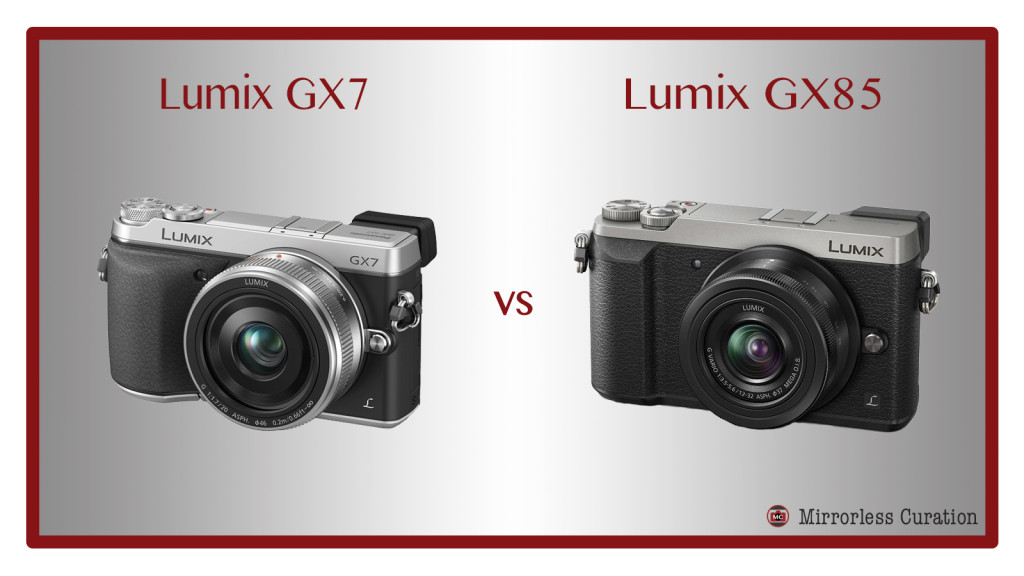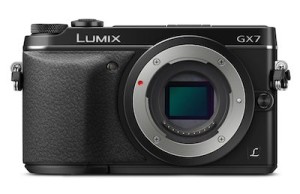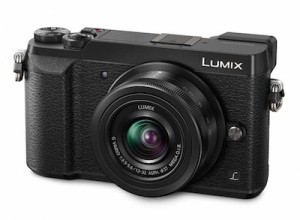
Of all the mirrorless cameras we’ve tested, the Panasonic GX7 was the model we grew to like the most. At the time, it was packed with the latest technology and was something of a “Goldilocks” camera –neither too big nor too small but just the right size.
As such, the GX8 came as a bit of a shock. Although it was labelled the successor to the GX7, the body size had increased to the point that it could no longer be called compact, which was an aspect many loved about the GX7.
Now it seems that Panasonic has returned to the ethos of the GX7 by releasing a middle-ground model, the GX85. (Just to complicate matters, it is known as the GX80 in the UK and Europe and the GX7 II in Japan.) The new GX85 incorporates much of the high-end technology found inside the GX8 but retains the smaller dimensions of the GX7.
At this point you may be wondering: how do the GX7 and GX85 differ?
Since the two models were released at a distance of nearly three years, much has changed from a technological standpoint. Indeed, body dimensions aside, the GX85 has much more in common with the flagship GX8 and other recent models from Panasonic than the GX7.
Ethics statement: The following list is based upon our experience with Lumix cameras. We were not asked to write anything about these cameras, nor were we provided any compensation of any kind. All opinions we express are our own. Within the article, there are affiliate links. If you buy something after clicking the link, we will receive a small commission. To know more about our ethics, you can visit our full disclosure page. Thank you!
1. Dimensions and Weight
Admittedly, this is one of the smaller differences between the GX7 and GX85. The GX85 is actually a little smaller than its predecessor with dimensions of 122 x 70.6 x 43.9mm compared to the 122.6 x 70.7 x 54.6mm of the GX7. However, the GX85 is heavier than the GX7 (426g versus 402g) with the battery and SD card.
2. Anti-Aliasing Filter
The second difference we’ll be curious to test is the resolving power of the GX85’s sensor. While both cameras have a 16MP sensor, the GX85 is the first Lumix camera to lack an anti-aliasing filter (low-pass filter). This should result in 10% better detail resolving power according to the official Panasonic specifications.
3. Image Stabilisation

The GX7 was the first Lumix camera to feature in-body stabilisation and while it was effective, it only worked on 2 axes.
The system has been updated on the GX85 to feature Panasonic’s Dual IS system which was first used on the GX8. The Dual IS system combines the in-body stabilisation of the camera with the O.I.S. of compatible Lumix lenses.
Unlike either the GX7 or the GX8, the GX85’s in-body stabilisation works on 5 axes (yaw, pitch, shift and yaw), providing up to 4 stops of compensation. It also works for 4K movie recording.
4. Video Recording
As previously mentioned, the GX85 can record in 4K (3840 x 2160) at 30p or 24p in addition to Full HD. By contrast, the GX7 can only record up to Full HD.
The GX85 also benefits from Panasonic’s 4K PHOTO modes. These modes allow you to capture 8MP stills from 30 fps footage shot in 4K.
In addition to these modes, there are also a couple of 4K modes that are currently unique to the GX85 (though I am sure they will come to the GX8 via a firmware update in the future). They are:
- Light Composition: The camera synthesises the images by choosing and saving a brighter pixel. This makes it possible to produce images of situations such as fireworks or night scenery in-camera.
- 4K Live Cropping: Yield stable panning or zooming while video recording. In panning shots, you can set the viewing angle to start and end to get smooth panning imagery without using a slider. When zooming, you can set the after-zoomed viewing angle first, so that the subject can fit perfectly in the frame.
5. Autofocus System
Panasonic’s Depth from Defocus (DfD) autofocus was first introduced on the Lumix GH4 and later came to the G7, GX8 and now the GX85. It is a contrast detection autofocus system that analyses two out-of-focus areas in the foreground and background to calculate the correct focus, and includes 49 area focusing, custom multi, 1 area focusing and pinpoint. It is effective but not quite as accurate as the phase detection autofocus systems of other mirrorless brands.
The GX7 has an older version of Panasonic’s contrast detection AF system. It includes 23 area focusing, 1 area focusing and pinpoint. Despite being an older AF system, it too is good enough for casual action photography. In fact, we even used it at a low-light dance performance and achieved good results.
6. Focal-Plane Shutter Mechanism
Since some GX8 models suffered from shutter shock between 1/60s and 1/320s, Panasonic opted to give the GX85 an updated electromagnetic focal-plane shutter mechanism. It is both quieter than that of the GX8 and reduces shutter shock by 90%. It can shoot up to 1/4000s for stills, and comes with an electronic shutter option that goes up to 1/16000s.
The GX7 also has a focal-plane shutter, albeit an older version. We never really noticed any shutter shock on the model we tested. It can shoot up to 1/8000s with the mechanical shutter and has a silent (electronic) shutter that is limited to ISO 3200.
7. Burst Shooting and Buffer
The burst shooting capabilities and buffer of the GX85 are also better than those of the GX7.
With the mechanical shutter, the new camera can shoot up to 8fps in AF-S and 6fps in AF-C, more than 13 RAW images or 100 JPgs depending on the memory card, aspect, picture size and compression.
By contrast, the GX7 only shoots up to 5fps in AF-S and 4.3fps in AF-C with a buffer of up to 9 RAW images.
On both cameras, you can only access Live View by using the Medium and Low burst modes which naturally take fewer frames per second.
8. Electronic Viewfinder
Surprisingly, the GX7 and GX85 appear to feature the same electronic viewfinder (EVF) with 2,764K dots of resolution, a field sequential LCD panel, a 100% field of view, and a magnification factor of 1.39x / 0.70x. The resolution is not native but the result of three RGB signals combined for each dot.
The only difference between them is that the GX7’s EVF tilts up 90 degrees while the GX85’s EVF is fixed – a curious decision as the GX series has come to be defined by the tilting viewfinder.
9. WiFi / NFC
A small difference between the GX7 and GX85 is that the former has WiFi and NFC connectivity while the latter only has WiFi.
10. Extra Features
It is only normal that a brand new model should have more features than its 2.5-year-old predecessor, and the GX85 has plenty.
In addition to the Exposure and White Balance bracketing modes found on the GX7, the GX85 comes with two new bracketing modes called Focus Bracket and Aperture Bracket. Focus Bracket is useful for macro and landscape photography because it allows you to take 1 to 999 frames in focus steps that can be set in 5 levels, whereas Aperture Bracket lets users have multiple shots with a different depth of field.
You’ll find the Post Focus mode that enables users to select an in-focus area even after taking the shot, as well as the brand new L. Monochrome profile that recreates the rich gradation of black and white film.
Finally, you get the Stop Motion and Time Lapse modes also found on the GX7.
On paper, the Panasonic GX85 is a much more technologically advanced camera than the GX7. It has the advantage of the various 4K modes for both video and stills, better image stabilisation and autofocus performance, slightly better image quality and many extra features.
However, whether your photography will actually benefit from all these new features is another matter entirely. If you don’t shoot video all that much and find the 4K modes more gimmicky than useful, you may be satisfied with the performance of the much more affordable GX7, especially if you are on a tight budget or would rather spend that extra money on a lens.
As always, only by conducting a complete comparison is it possible to come to a final conclusion about these two cameras. We hope to conduct one soon on MirrorLessons.
You can find the GX7 for $500 or even less depending on whether or not it is a second-hand model, while the suggested retail price of the GX85 is $799.99.
Check price of the GX7 on B&H Photo
Check price of the GX85 on B&H Photo




